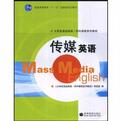传媒英语
出版时间:2008年 出版社:高等教育出版社 作者:《大学英语选修课/学科课程系列教材》项目组 页数:238
Tag标签:无
前言
随着我国经济、文化、科技的不断发展,社会对大学生的英语水平提出了更高的要求,大学英语教学改革已成为社会关注的热点之一。为了推动大学英语教学改革,教育部在总结近年来教学改革经验的基础上,对2004年公布的《大学英语课程教学要求(试行)》进行了全面修订,并于2007年8月正式颁布了《大学英语课程教学要求》。与以往的《大学英语教学大纲》相比,新的《大学英语课程教学要求》从以下三个方面为大学英语教学带来了新的变化:1.培养目标的变化。《大学英语课程教学要求》提出,大学英语要培养学生的英语综合应用能力,在坚持其通用基础学科定位的同时,提出了与专业学习相结合的专门用途英语,以及以人文、国际交流为核心的文化素质课程的定位;2.教学思想的变化。提出了自主学习的思想,鼓励学生自主选择学习内容和学习方式;3.教学模式的变化。鼓励在教和学的过程中使用以计算机为基础的教育技术,拓展英语学习的渠道,增加语言练习的机会,提高语言输入和输出的质量。 面对新的改革形势,我们明显感到,现行的以英语基础能力发展为核心的大学英语教材体系难以适应新形势的需要,广大师生也盼望着更多与国际文化知识、专业知识、学术交流相结合的新型英语教材,满足正在出现的大学英语的多重定位、学生自主选择学习内容和基于计算机技术的自主学习方式等变化的需要。为此,我们提出开发《大学英语选修课/学科课程系列教材》。 本系列教材为“普通高等教育‘十一五’国家级规划教材”,主要供完成《大学英语课程教学要求》中规定的“一般要求”后,继续学习“较高要求”和“更高要求”英语课程的学生使用,也可供研究生及广大专业技术人员学习专业英语、学术英语,提高英语综合应用能力使用。
内容概要
《传媒英语》共有十四个单元,每单元的设计课时为四课时。教师可以根据自己的专长和学生的专业从中挑选部分单元作为授课内容。对于已经通过大学英语四级考试的本科生或研究生,建议使用每单元的Intensive Reading和Task部分,以全面提升学生的传媒专业学术英语和职业英语水平。对于未通过大学英语四级考试的本科生、高职高专学生、传媒从业者,建议使用每单元的,Task部分,以提高实际操作中的专业英语水平为主。因为Task部分的实用性很强,其词汇、句式、语篇结构都相对简单,与具有学术英语特征、以议论文为主的IntensiVeReading部分有较大区别。
书籍目录
Unit1 Mass Media and Information AgeIntensive ReadingTaskData BankUnit2 NewspaperIntensive ReadingTaskData BankUnit3 MagazineIntensive ReadingTaskData BankUnit4 RadioIntensive ReadingTaskData BankUnit5 TelevisionIntensive ReadingTaskData BankUnit6 FilmIntensive ReadingTaskData BankUnit7 InternetIntensive ReadingTaskData BankUnit8 AdvertisingIntensive ReadingTaskData BankUnit9 AnimationIntensive ReadingTaskData BankUnit10 QuestionnaireIntensive ReadingTaskData BankUnit11 Media LiteracyIntensive ReadingTaskData BankUnit12 Media Laws and EthicsIntensive ReadingTaskData BankUnit13 Media EconomicsIntensive ReadingTaskData BankUnit14 Culture and Culture Creative IndustryIntensive ReadingTaskData Bank
章节摘录
Radio Story Formats Your radio story can be done in many formats. You will need to determine what type of radio story you wish to do before you begin taping or interviewing. Most radio stories involve the announcer reading part of the story, then pausing to play a piece of tape of a person involved in the story. soundscapes —— a creative mix of sound and voice, mixed digitally, about an event or issue, usually 4 to 5 rain in length. mini-does —— a highly focused mix of script and voice/interview clips, with a sound bed, usually 4 to 6 minutes in length. commentaries —— the taped performance of a written (and edited) script —— not about a macro issue, but about a personal issue/experience, usually 3 min in length. streeters —— a mix of voices/interview clips (one after the other) about an event or issue, about 3 to 4 minutes in length. Usually the same question is posed to all interviewed. /discussions —— a taped group discussion on a topic chosen by the group, usually editeddown from 20 minutes of freewheeling talk to about 5 to 6 minutes of broadcast-ready tape. Writing for Radio Radio writing has to be tight and clear, and above all, interesting. You have to be creative and pay attention to words, sound and language. Use one idea to a sentence. Anchor a story with present or present perfect verbs in the lead. Begin sentences with a source, with the attribution, if needed, and use paraphrased quotes. Use ordinary, one- and two-syllable words whenever possible. Use vigorous verbs. Simple sentences with active verbs form the basis of effective writing for radio. Keep in the present tense. Present tenses give immediacy and energy to news writing, allowing listeners to feel that they are hearing about the news as it is taking place. Radio is conversational so your writing has to sound like it is "talked", not read.
图书封面
图书标签Tags
无
评论、评分、阅读与下载
